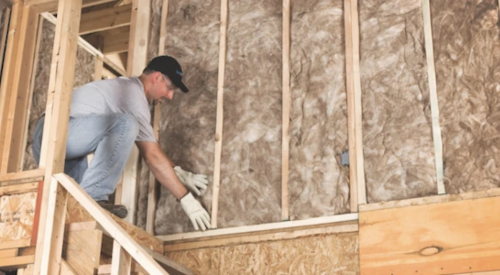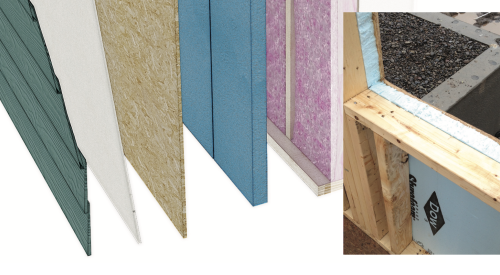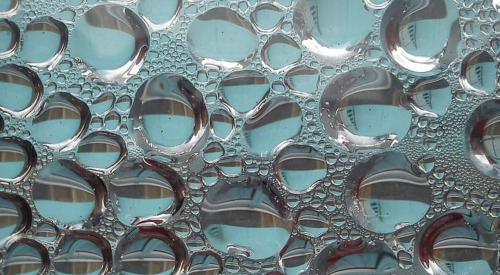Heating and cooling account for 50 percent to 70 percent of the energy used in the average American home, according to the U.S. Department of Energy (DOE). Good insulation not only can minimize these costs for your home buyers, it also can make your homes more comfortable and a little quieter. A little extra attention to insulation also can boost your reputation for quality homes. Here's what you need to know about choosing and installing insulation.
Getting the Most Out of Insulation
Insulation is rated according to its R-value, or its ability to resist heat flow, with a high R-value indicating a greater resistance. DOE provides recommended insulation levels and installation guidelines for ceilings and attics, walls, basements, and crawl spaces at eere.energy.gov/buildings/info/publications.html.
But before you even pick an insulation type, think about how you can optimize its performance:
- Conduct thorough air sealing. Air flowing through the insulation will waste energy, and moist air can damage the insulation and reduce its effectiveness.
- Control moisture. Rain can penetrate through improper flashing and leaks around doors, windows, chimneys and poorly installed siding. In all except hot and humid areas, install a vapor retarder (see "Vapor Retarders").
- Recessed light fixtures can be a major source of heat loss, but be careful how close you place insulation to a fixture unless it is marked "I.C." - designed for direct insulation contact. Check your local building codes for recommendations.
- Remember that proper installation is critical. Gaps and compressed areas of insulation can cut the savings potential by more than 25 percent. Follow the steps for each kind of insulation below or think about certification (see Certifying Installers).
The Four Types of Insulation
Insulation takes four basic forms: batts and blankets, loose fill, rigid board and spray foam.
Batt and blanket insulation, the most common type and the easiest to work with, is made of mineral fiber - either processed fiberglass or rock wool. It's used to insulate below floors, above ceilings and within walls. Generally, batt insulation is the least expensive wall insulation material but requires careful installation for effective performance. It is best-suited for standard stud and joist spacing that is relatively free of obstructions.
Loose-fill insulation includes loose fibers of rock wool, fiberglass or cellulose that are blown into building cavities or attics using special equipment. It generally costs more than batt insulation, but it offers reduced air leakage through the wall cavity plus improved sound deadening. It is particularly well-suited for irregularly shaped areas and around obstructions and other hard-to-reach areas.
Cellulose fiber, made from recycled newspapers, is chemically treated for fire and insect resistance. It has good moisture resistance, too, and requires less energy to produce than other insulations. It can be installed in walls, floors or attics using a dry-pack process or a moist-spray technique. Check that the bags are clearly labeled to indicate that the material meets federal specifications for fire resistance.
Fiberglass and rock wool loose-fill insulation provide full coverage with a Blow-in Blanket System (BIBS) that involves blowing insulation into open stud cavities behind a net.
Rigid board insulation is commonly made from fiberglass, polystyrene and polyurethane. It comes in a variety of thicknesses and has a high insulating value - approximately R-4 to R-8 per inch. This type of insulation is used for flat or low-sloping roofs, on basement walls, on exterior walls, as perimeter insulation at concrete slab edges and in cathedral ceilings.
When rigid foam insulation boards are used to insulate the interior of masonry walls, they do not require added vapor retarder treatment. If foil-faced board is used, the foil side is placed toward the room. To install boards, wood-furring strips should be fastened to the wall first. These strips provide a nailing base for attaching interior finishes over the insulation. Fire safety codes require that a gypsum board finish, at least 1/2 inch thick, be placed over plastic foam insulation and attached to the wood furring strips or underlying masonry using nails or screws.
Use recommended adhesives to bond rigid foam insulation boards to the walls of an unventilated crawlspace. Because the insulation will be exposed, be sure to check the local fire codes and the flame-spread rating of the insulation product. In very cold regions, you should continue the insulation over the floor of the crawl space for about 2 feet (above any crawl space floor vapor retarder). Check with a pest control professional to see if you need to provide for termite inspections.
For exterior applications, rigid board insulation must be covered with weatherproof facing. Since below-grade exterior insulation allows a path for termites, check with local code officials to determine whether such insulation is acceptable. Leave a 6-inch gap between the insulation and any wood foundation element to provide a termite inspection area. When rigid board insulation extends above ground, protect the insulation by covering it with stucco or another suitable protective coating.
Spray foam insulation is a two-part liquid containing a polymer, such as polyurethane or modified urethane, and a foaming agent. The liquid is sprayed through a nozzle into wall, ceiling and floor cavities. It expands into a solid cellular plastic with millions of tiny air-filled cells that fill every nook and cranny.
Spray foam insulation should only be applied by professionals, and its materials cost more than traditional batt insulation. However, since spray foam forms both an insulation and an air barrier, it can be cost competitive with batt insulation because it eliminates the usual air-tightness detailing steps, such as caulking, applying housewrap and vapor barrier and taping joints.
Vapor Retarders
A vapor retarder, commonly called a vapor barrier, is a specially treated paper, thin plastic sheeting or low permeance paint that prevents condensation of water vapor inside wall or ceiling materials. Trapped moisture breeds mold and mildew and can cause damage to the wallboard and paint as well as structural deterioration.
The vapor retarder must have a vapor permeance - the rate that moisture can pass through it - of not more than 1.0 perm, tested in accordance with ASTM Standard E96-80.
Placement of Vapor Barriers
Interior moisture tries to escape a building. Vapor retarders keep this moisture in a warm area where it will not condense. In colder climates, vapor retarders should be applied behind the drywall or ceiling next to existing insulation and between the insulation and the conditioned space of insulated floor sections over crawl spaces.
In hot and humid climates, use unfaced batts; vapor retarders are not appropriate in such climates.
When installing additional insulation, be sure that a second vapor retarder is not applied between layers of insulation. Moisture may be trapped between the two vapor retarders and eventually ruin the installation. Some batt insulation comes with a vapor retarder attached in the form of paper or aluminum-like sheathing, so take care to avoid inadvertently adding a second vapor retarder during an insulation upgrade.
Certifying Installers
'You can choose the right insulation, but it will not do the job it's supposed to do if it is not installed properly," says Bob Hill of the NAHB Research Center. Realizing that proper installation is as important to a product's performance as the quality of the product itself, the Research Center joined with CertainTeed Corp. in 1995 to establish an independent, third party Insulation Contractor Certification (ICC) program. The program now certifies more than 160 insulation installers in 37 states.
Any contractor may become certified providing they have an established quality system that meets the program requirements. No trade organization or product manufacturer affiliation is required. To become certified, a trade contractor must pass an extensive qualification audit. Once certified, trade contractors are audited twice yearly to verify compliance with certification requirements. Auditors perform a series of detailed examinations of the contractor's quality system, job records and warehouse, and inspect installed products at various job sites.
Certified installers enjoy many benefits, including enhanced credibility with builders and code officials, reduced callbacks, better installation efficiency and profit potential, and improved employee morale and effectiveness.
And of course, homeowners are more likely to enjoy a cozy, energy-efficient house.
For more information on the ICC program and other certification and testing services, including insulation products testing, go to nahbrc.org and click on Lab/Certification Services.











